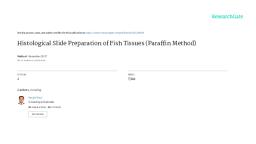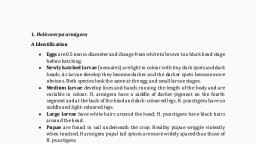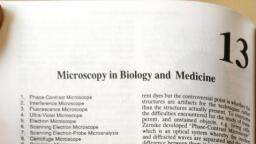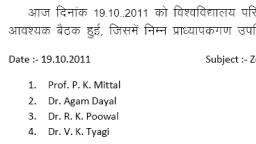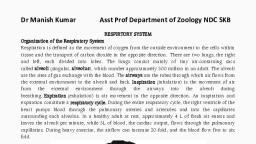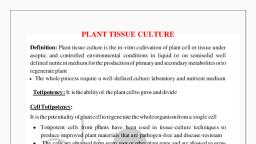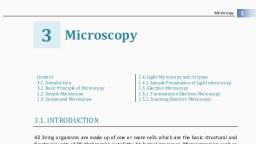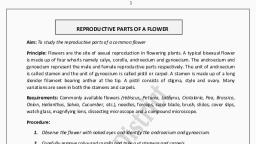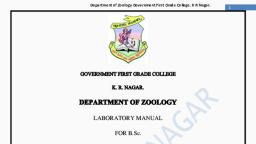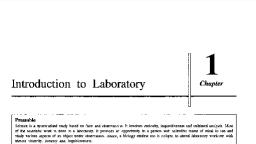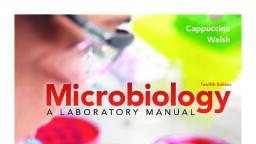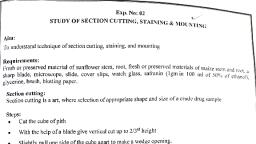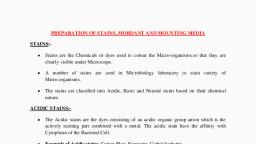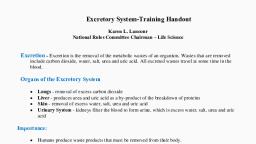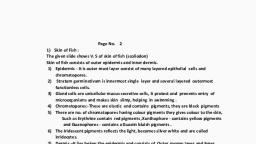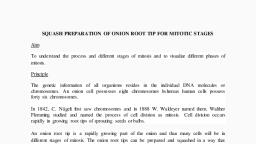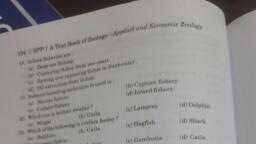Page 1 :
See discussions, stats, and author profiles for this publication at: https://www.researchgate.net/publication/321299639, , Histological Slide Preparation of Fish Tissues (Paraffin Method), Method · November 2017, DOI: 10.13140/RG.2.2.15130.34243, , CITATION, , READS, , 1, , 7,560, , 2 authors, including:, Monjit Paul, University of Calcutta, 10 PUBLICATIONS 55 CITATIONS, SEE PROFILE, , All content following this page was uploaded by Monjit Paul on 26 November 2017., The user has requested enhancement of the downloaded file.
Page 3 :
HISTOLOGICAL SLIDE PREPARATION OF FISH TISSUES (PARAFFIN METHOD)., , Histological Slide Preparation of Fish Tissues (Paraffin Method)., 1. Collection of the Sample:, a. Live fishes are sacrificed to take the organs – heart, liver, kidney, testes, ovary, intestine, stomach etc., 2. Fixation of the Sample:, a. Fixation process must be started quickly as possible as the removal of selected organs., b. Take 3-5 mm thick tissue/organs for quick fixation in fixatives., c. Plastic sample jars for fixation are labelled with sample name, collection date etc., d. Fill the vials with 2/3 of fixatives., e. Organs and fixative volume must be 1:20., f. Place the organs into the separate vials with fixative., g. Store the vial to fix the tissue. Fixation time will depend on the type of fixatives used., h. Fixation time – Formalin: 10-12 hrs. Alcohol formalin 7-10 hrs. and Bouin’s: 4-6 hrs., (At normal room temperature)., 3. Dehydration of the Sample:, After proper fixation, the tissue must be dehydrated to remove the water from tissue block, by following ways., - Alcohol (50%), - 1 hr., - Alcohol (70%), - 1 hr., - Alcohol (70%), - 1 hr., - Alcohol (85%), - 1 hr., - Alcohol (95%), - 1 hr., - Alcohol (100%), - 1 hr., 4. Cleaning:, After dehydration, the tissues are to be cleared with clearing agent to remove alcohol prior, to paraffin embedding. The clearing agent should be miscible both in alcohol and paraffin., The commonly used cleaning agents are:, - Xylene = (3-4 mm thick tissue can be cleared in 30-60 minutes for two, changes each), - Chloroform = (Clearing time – Overnight, but less harmful than xylene for, the tissue), - Cedar wood oil (Histological GR) = (It is good for cleaning of delicate, tissue)., 5. Impregnation with paraffin:, a. Paraffin are melted in hot air oven at 50-60 degree centigrade depending upon the, melting point., b. Avoid to exceed the temperature 5 degree centigrade above the melting point as it can, cause the tissue hardening or shrinkage. If the wax is over heated it can be crystallised, and become useless., c. The tissue is transferred to molten wax. The amount of wax should be 25-30 times, more than tissue volume., d. Impregnation must be with 2-3 changes in melting wax to complete removal of, clearing agent., 1|Page/MONJIT PAUL/MUKTI CHANDA/ASUTOSH COLLEGE, KOLKATA
Page 4 :
HISTOLOGICAL SLIDE PREPARATION OF FISH TISSUES (PARAFFIN METHOD)., , 6. Embedding:, It is the orientation of tissue in melted paraffin which after solidification can be used for, tissue sectioning in microtome., a. Molten paraffin wax which is heated at temperature just 2-3 degree above the melting, point is to poured into the mould to an adequate depth so as to cover the thickest tissue, block., b. The wax touching the mould will quickly form a semi solid layers. Now introduced, the tissue with prewarmed forceps to prevent the wax to stick in it. The tissue is pressed, to the semi solid block to orient it perfectly., c. As soon as possible, the mould is submerged into the cold water at 20 degree, centigrade to avoid crystallization of paraffin. Ice water must be avoided as it may, crack the paraffin., d. When the blocks are set hard they are removed from the mould., e. The tissue surface towards the mould base is the cutting surface., f. The processing schedule after dehydration is as follows:, - Absolute alcohol + Xylol (equal parts), 1 hr., - Cedar wood oil, – 2 hr., - Cedar wood oil, – 2 hr., - Cedar wood oil, – 1 hr., - Paraffin wax (melted) - 2 hr., - Paraffin wax (melted) - 1 hr., - Paraffin wax (melted) - 1 hr., - Placing the tissue to paraffin mould., 7. Cutting:, a. Fix the block in the block holder on the microtome knife in such as position that it will, be clear of the knife when it is in position, block may be fixed directly or it may be, fixed to a metal carrier which in turn is fixed to the microtome., b. Insert the appropriate knife in the knife holder and screw it tightly in position. Adjust, if required. The clearance angle should be set at 3-4 degree and angle of slope should, be set permanently at 90 degrees. It is important to tighten the knife clamp screw, securely and block clamp screws most also be firm., c. Trimming of tissue block: Move the block forward so that the wax block is almost, touching the knife. To trim away any surplus wax and to expose a suitable area of, tissue for sectioning, the section thickness adjusters are set at 15 microns., d. On exposing a suitable area of tissue, the section thickness is set to the appropriate, level for routine purposes to 4-6 microns., e. Apply ice to the surface of the block for a few seconds and wipe the surface of block, free of water. This step is optional but makes sections cut easily., f. The whole surface of the block will move parallel to the edge of the knife in order to, ensure a straight ribbon of sections., g. The microtome is now moved in an easy rhythm with right hand operating the, microtome and left hand holding the sections away from the knife., 2|Page/MONJIT PAUL/MUKTI CHANDA/ASUTOSH COLLEGE, KOLKATA
Page 5 :
HISTOLOGICAL SLIDE PREPARATION OF FISH TISSUES (PARAFFIN METHOD)., , h. The ribbon is formed due to the slight heat generated during cutting, which causes the, edges of the sections to adhere. If difficulty is experienced in forming the ribbon it is, sometimes overcome by rubbing one of the edges of the block with finger., i. During cutting the paraffin wax embedded sections become slightly compressed and, creased. Before being attached to slides the creases must be removed and the section, flattened. This is achieved by floating them on warm water at 45-degree C, with little, trace of detergent. It is helpful to flatten the ribbon and can remove any shrinkage., j. The action in floating out must be smooth with the trailing end of ribbon making, contact with water first to obtain flat sections with correct orientation, floating out with, the shiny surface towards the water is essential. When the ribbon has come to rest on, water the remaining wrinkles and folds are removed by teasing apart by using forceps, or seeker., k. Picking up sections – The ribbon of sections floating on water is split into individual, or groups of sections by use of forceps of seekers. Picking up a section on slide is, achieved by immersing the slide lightly smeared with adhesive vertically to three, fourths of its length bringing the section in contact with the slide. On lifting the slide, vertically from the water, the section will flatten on to the slide. The sections are then, blotted lightly with moistened blotting paper to remove excess water and to increase, contact between section and slide. For delicate tissues or when several ribbons of, sections are placed on the slide, omit the blotting instead keep the slide in upright, position for several minutes to drain., l. Sections are collected from the very first cut that includes any tissue. Ribbons of ten 1-10, 11-20, 11-20, 21-30 so on are picked up and mounted on the slides., m. Adhesive are placed on slide and rub over it before placing the section cutting., n. Drying of section: Sections are then kept in incubator with a temperature 5-6ºC above, the melting point of wax i.e. at 60ºC for 20-60 minutes. It is better to overheat than, underheat. If the sections are not well dried they may come off during staining. The, sections should not be allowed to dry without a good contact with the slide, such, sections will come off during staining., 8. Staining:, The process of staining in copulin jar with Haematoxylin and Eosin are as follows:, a. Cleaning and Rehydration –, - Xylol, - 1 to 3 minutes., - Xylol, - 1 minute, - Xylol, - 1 minute, - Alcohol (100%), - 30 sec., - Alcohol (85%) - 30 sec., - Alcohol (70%) - 30 sec., - Tap water, - 30 sec., b. Staining –, - Haematoxylin - 2 minutes., - Tap water, - 30 sec., - Tap water, - 30 sec., - Tap water, - 30 sec., 3|Page/MONJIT PAUL/MUKTI CHANDA/ASUTOSH COLLEGE, KOLKATA
Page 6 :
HISTOLOGICAL SLIDE PREPARATION OF FISH TISSUES (PARAFFIN METHOD)., , - Alcohol (70%) - 1 minute, - Alcohol (95%) - 1 minute, - Eosin Y, - 1 minute, - Alcohol (95%) - 2 minute, - Alcohol (95%) - 1 minute, - Alcohol (100%), - 2 minute, - Alcohol (100%), - 2 minute, - Alcohol (100%), - 2 minute, - Xylol, - 1 minute, - Xylol, - 1 minute, - Xylol, - 1 minute, 9. Mounting:, a. The final step in this procedure is to permanently mount the sections under a coverslip., This is accomplished by covering the section in a medium that will harden and produce, a clear binder between the slide and cover slip. The ideal mounting medium should, not distort the stain colour, or yellow and become brittle with age. DPX or Canada, balsam can be used as good mounting adhesive., b. Place 2-3 drops of resin over the slide carefully to avoid trapping any bubble inside it., c. To avoid entrapping air bubbles, lower the cover slip slowly from one side of the, droplet., d. Place the slide on the slide warmer and carefully place a lead weight on top of the, cover slip. There should be enough mounting medium to completely cover the bottom, of the cover slide, and budge slightly around the edges., e. Leave slides on the warmer for at least 24 hours; excess medium can then be cut from, edges of cover slip with a razor blade., , 4|Page/MONJIT PAUL/MUKTI CHANDA/ASUTOSH COLLEGE, KOLKATA
Page 7 :
HISTOLOGICAL SLIDE PREPARATION OF FISH TISSUES (PARAFFIN METHOD)., , Fixatives:, Formalin (v/v) (10%), -, , Formaldehyde, Acid sodium phosphate (monohydrate), Anhydrous disodium phosphate, Water to make the volume, , = 10 ml, = 0.4 gm, = 0.65 gm, = 100 ml, , Alcohol formalin (v/v) (10%), - Formalin, - Alcohol (70%-95%), , = 10 ml, = 90 ml, , Bouin’s Fluid, - Saturated aqueous picric acid, - Formalin, - Acetic acid, , = 75 ml, = 25 ml, = 05 ml, , Section adhesive Mayer’s Albumin –, - Fresh egg white, - Glycerol, - Sodium salicylate, , = 50 ml., = 10 ml., = 01 ml., , Stain:, Haematoxylin:, , a., b., c., d., e., , - Haematoxylin powder (Harris haematoxylin), = 4 g., - Potash alum, = 100 g., - Mercuric oxide, = 2 g., - Ethanol (100%), = 60 ml., - Distilled water, = 800 ml., Boil 800 ml. distilled water with potash alum (100 g.), Add 4 g. Haematoxylin with 60 ml ethanol to dissolve in it., When potash dissolve in water, add ethanol haematoxylin solution in it., After adding Haematoxylin at low heat add mercuric oxide and heat the mixture again to, dissolve Mercuric oxide completely. Now the colour of the solution become pinkish blue., In working solution of Haematoxylin (100 ml.) 4 ml of glacial acetic acid can be added, for good nuclear staining., , Eosin:, - Eosin, - Distilled water, - Alcohol (95%), - Glacial acetic acid., a. Add eosin to distilled water., b. Add 95% alcohol in eosin + distilled water., c. To final mixture add 0.8 ml glacial acetic acid., , = 2g., = 160 ml., = 640 ml., = 0.8 ml., , 5|Page/MONJIT PAUL/MUKTI CHANDA/ASUTOSH COLLEGE, KOLKATA, , View publication stats
